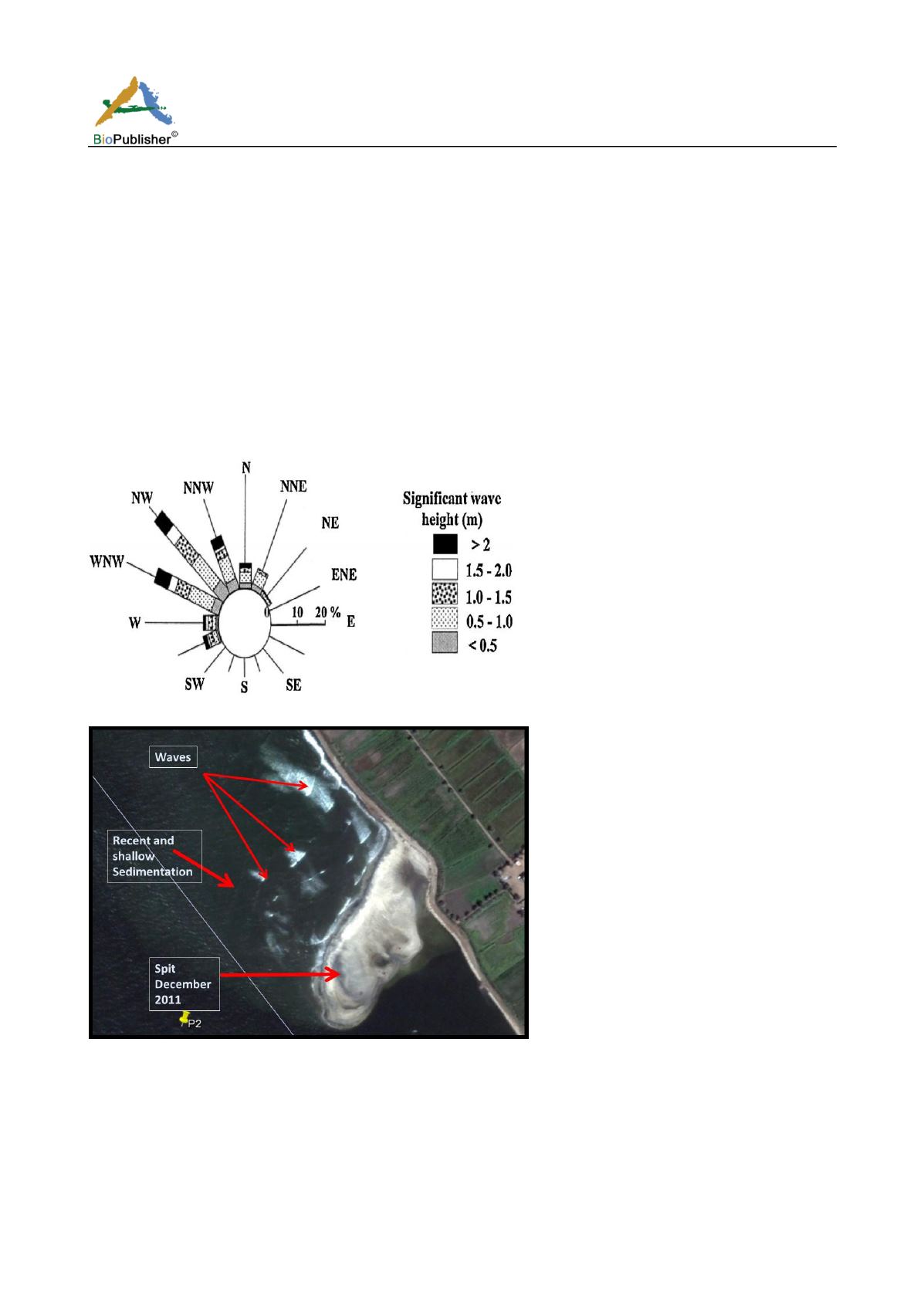
International Journal of Marine Science, 2017, Vol.7, No.2, 8-18
14
2.2.4 Erosion state
Erosion of the headland of Rosetta is the main source of sediments in Rashid coastal area. After the construction
of the eastern and western seawalls, the behaviour of the erosion was changed to be vertical in front of the
seawalls and in the coastal zones west of the western seawall as shown in Figure 2 and east of the eastern seawall.
These sediments can transport either long-shore or cross-shore and enter the Rosetta Estuary.
2.2.5 Wave action
The wave actions can be demonstrated by the wave rose of Rosetta coast as shown in Figure 8. According to the
averaged wave climate of five years of actual measurements between 1986 and 1990 in Rosetta, the majorit y of
wave directions are originated from NW WNW, NNW. Small portions of waves arrived from N, W, NNE, SSW
and NE especially in March and April were monitored (Frihy and Dewidar, 2003; El Sayed et al., 2007). The
dominant wave is from NW direction which perpendicular to the mouth of Rosetta branch. The satellite image in
Figure 9 shows the propagation of the waves inside the estuary. The marine origin waves attack the eastern border
of Rosetta Estuary and destroy some parts of this border at Borg Meghazil site.
Figure 8 Average wave direction–height distribution at Rosetta area (Frihy and Dewidar, 2003)
Figure 9 The attack of the waves as deriving force to form the spit inside the Rosetta Estuary during 2011
Note: The coordination of the spit is 31°27.26
’
N and 30°22.61
’
E
The lower rate of discharge from the river is in coincidence with high energy of sea wave, the spit can be
developed in the river side direction. These driving forces enhances the migration of the spit toward riverside. The
incoming wave action towards the shore plays a major role in shaping the sand spit. Spits increase in height above
the water only when the waves and the shore drift move from the direction of their land connection. Relations
between the variables of current direction, wave direction, wave energy, the amount of sediment available, and
depth of water determine the direction the spit formed (Evans, 1972).


